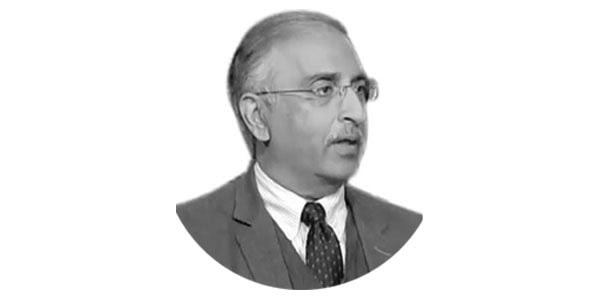Challenges for the new government
Challenges abound on the economic front. At the other extreme is PTI’s new political narrative of a ‘civil war’.
The two-economy and civil war-cannot coexist. One of the two has to be buried. Bury the narrative of a ‘civil war’-or bury the economy.
Clearly, PTI’s current political strategy has three pillars: a conspiratorial narrative, weaponization of social media and an anti-institutional game plan. Under the conspiratorial narrative, America is conspiring against Imran Khan.
The Election Commission of Pakistan is conspiring against Imran Khan. The Supreme Court of Pakistan is conspiring against Imran Khan. The media is also conspiring against Imran Khan.
More recently, Imran Khan’s guns are pointing more towards the Pakistan Army and less towards his political rivals. In the current political scenario, political opponents are more towards eliminating each other rather than democratically competing against each other.
Politics and economics are deeply, deeply interconnected. According to an IMF study, “Our results suggest that governments in politically fragmented countries with high degrees of political instability need to address its root causes and try to mitigate its effects on the design and implementation of economic policies.
Only then, countries could have durable economic policies that may engender higher economic growth.” To be certain, “political instability negatively affects economic growth…..”
On the economic front, the mother of all challenges is to raise $8 billion to $9 billion in the next six to seven weeks to pay back external debt and fill the current account deficit.
Saudi Arabia is looking towards the IMF. The United Arab Emirates is looking towards the IMF. The World Bank is looking towards the IMF. The Asian Development Bank is looking towards the IMF. Lo and behold, the IMF is looking towards Washington.
PM Shehbaz Sharif is between the devil and the deep blue sea: to keep Pakistan afloat PM Shehbaz Sharif needs the IMF but accepting the IMF’s conditionality of reversing the unfunded subsidy on petrol and diesel means a huge political cost for the newly elected prime minister.
Yes, the Rs100 billion-a-month subsidy would have to be reversed as Pakistan is the only country on the face of the planet that is buying expensive oil from the international market and selling it cheaper in the domestic market. This is simply unsustainable.
The rate of inflation is the biggest of challenges for some 95 percent of Pakistanis. In April, the Wholesale Price Index (WPI) went up by 28 percent.
What that means is that wholesale prices will in a few weeks show up at the retail level. And once the subsidy on petrol and diesel are reversed there will be a new inflationary spiral.
The next major challenge is circular debt in the power sector. To be certain, Pakistan’s energy sector will make or break Pakistan’s economy.
To be sure, circular debt will make or break Pakistan’s power sector. Red alert: circular debt has grown from Rs1.1 trillion in August 2018 when PTI formed the government to over Rs2.5 trillion-that’s more than $13 billion.
The next challenge is national debt and liabilities. To be sure, at Rs54,000 billion national debt is now unsustainable.
The new government would have to do two things: get the external debt rescheduled and pay down the internal debt through privatization. There’s no other way out.
During the first week of the new government the stock market went up by some two thousand points and the rupee strengthened against the dollar. But the new government’s honeymoon lasted only a week-and it has been downhill ever since.









